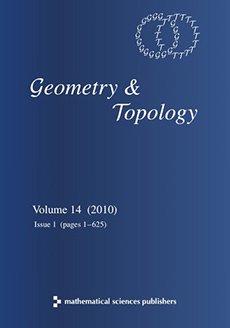Abstract
A moduli space of stable quotients of the rank trivial sheaf on stable curves is introduced. Over nonsingular curves, the moduli space is Grothendieck’s Quot scheme. Over nodal curves, a relative construction is made to keep the torsion of the quotient away from the singularities. New compactifications of classical spaces arise naturally: a nonsingular and irreducible compactification of the moduli of maps from genus 1 curves to projective space is obtained. Localization on the moduli of stable quotients leads to new relations in the tautological ring generalizing Brill–Noether constructions.
The moduli space of stable quotients is proven to carry a canonical –term obstruction theory and thus a virtual class. The resulting system of descendent invariants is proven to equal the Gromov–Witten theory of the Grassmannian in all genera. Stable quotients can also be used to study Calabi–Yau geometries. The conifold is calculated to agree with stable maps. Several questions about the behavior of stable quotients for arbitrary targets are raised.
Citation
Alina Marian. Dragos Oprea. Rahul Pandharipande. "The moduli space of stable quotients." Geom. Topol. 15 (3) 1651 - 1706, 2011. https://doi.org/10.2140/gt.2011.15.1651
Information





